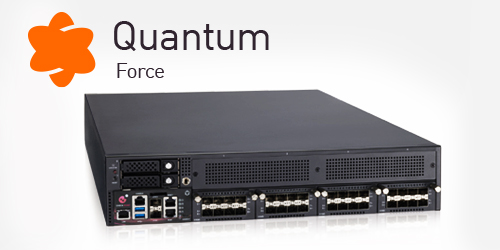Check Point® Software Technologies Ltd. (NASDAQ: CHKP) revealed that banking trojans were extensively used by cyber-criminals during August, with three variants appearing in the company’s latest Global Threat Impact Index.
The Zeus, Ramnit and Trickbot banking trojans all appeared in the top ten. These Trojans work by identifying when the victim is visiting a banking website, and then use keylogging or webinjects to harvest basic login credentials or more sensitive information such as PIN numbers. Alternatively, Trojans may also direct victims to fake banking websites designed to mimic the legitimate ones and steal credentials that way.
The August Global Threat Impact Index also revealed that Globeimposter, a ransomware disguised as a variant of the Globe ransomware, was the world’s second most prevalent malware throughout the month. Although it was discovered in May 2017, the malware did not begin to rapidly proliferate until August, distributed by spam campaigns, malvertising and exploit kits. Upon encryption, Globeimposter appends the .crypt extension to each encrypted file, and a payment is demanded from victims in return for decrypting their valuable data.
“Financial gain is the major motive for the vast majority of cybercrime, and unfortunately criminals have a wide range of tools at their disposal to achieve this,” said Maya Horowitz, Threat Intelligence, Group Manager at Check Point. “To see both a highly effective ransomware variant and a range of banking Trojans in the top ten most prevalent malware families really underlines how tenacious and sophisticated malicious hackers can be in their attempts to extort money. Organizations need to be both vigilant and proactive in order to protect their networks.”
August 2017’s Top 3 ‘Most Wanted’ Malware:
*The arrows relate to the change in rank compared to the previous month.
Roughted remained the top malware in August, although its global impact decreased from 18% to under 12% of organizations worldwide. Globalimposter in second place had a global impact of 6% and HackerDefender in third place with 4% global impact.
- ↔ Roughted – Large scale Malvertising used to deliver various malicious websites and payloads such as scams, adware, exploit kits and ransomware. It can be used to attack any type of platform and operating system, and utilizes ad-blocker, bypassing and fingerprinting in order to make sure it delivers the most relevant attack.
- ↑ Globeimposter – Ransomware disguised as a variant of the Globe ransomware. It was discovered in May 2017, and is distributed by spam campaigns, malvertising and exploit kits. Upon encryption, the ransomware appends the .crypt extension to each encrypted file.
- ↓ HackerDefender – User-mode Rootkit for Windows. Can be used to hide files, processes and registry keys, and also implements a backdoor and port redirector that operates through TCP ports opened by existing services. This means it is not possible to find the hidden backdoor through traditional means.
Hummingbad, which appeared in the top ten every month in the first half of 2017, did not make a re-appearance. The most popular malware used to attack organizations’ mobile assets changed in August, with Triada moving up from third place, followed by Hiddad and Gooligan:
Top 3 ‘Most Wanted’ mobile malware:
- Triada – Modular Backdoor for Android which grants super-user privileges to downloaded malware, which helps the malware become embedded into system processes. Triada has also been seen spoofing URLs loaded in the browser.
- Hiddad– Android malware which repackages legitimate apps and then releases them to a third-party store. Its main function is displaying ads, however it is also able to gain access to key security details built into the OS, allowing an attacker to obtain sensitive user data.
- Gooligan– Android malware capable of rooting devices and stealing email addresses and authentication tokens stored on the device.
The August Threat Index shows just how diverse and dynamic the cyber threat landscape is. Just a few months ago, Hummingbad was incredibly dominant; however in August it did not even make it into the top ten. Similarly, ransomware has been grabbing most of the cybersecurity headlines, yet well-established banking Trojans are on the rise again.
“It’s vital for organizations to be alert to these shifting threats, to simultaneously keep their defenses up against well-known malware families, new variants and new zero-day threats “added Horowitz “This requires a multi-layered cybersecurity strategy, which can respond to a broad range of continually evolving attack types.”
Check Point’s Global Threat Impact Index and its ThreatCloud AI Map is powered by Check Point’s ThreatCloud AI intelligence, a collaborative network to fight cybercrime which delivers threat data and attack trends from a global network of threat sensors. The ThreatCloud AI database holds over 250 million addresses analyzed for bot discovery, more than 11 million malware signatures and over 5.5 million infected websites, and identifies millions of malware types daily.
* The complete list of the top 10 malware families in August can be found on the Check Point Blog.
Follow Check Point Research via:
Blog: https://research.checkpoint.com/
Twitter: https://twitter.com/_cpresearch_
About Check Point Research
Check Point Research provides leading cyber threat intelligence to Check Point Software customers and the greater intelligence community. The research team collects and analyzes global cyber-attack data stored on ThreatCloud AI to keep hackers at bay, while ensuring all Check Point products are updated with the latest protections. The research team consists of over 100 analysts and researchers cooperating with other security vendors, law enforcement and various CERTs.







